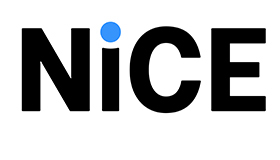Writing for NICE, Blair Pleasant looks at stalling stagnation with smart solutions.
The heady days of economic growth are gone, with inflation and a looming recession weighing on both businesses and individuals.
With upward pricing pressure, “stagflation” is expected to rear its ugly head to become a major theme for 2023.
According to Yahoo Finance, “High inflation risks and lower growth will create a stagflationary scenario for the most developed economies including the United States.”
For many of us “stagflation” brings flashbacks of the 1970s with its high inflation and long lines at gas stations due to the OPEC oil embargo.
With rising oil prices and reduced supply, the costs of goods rose rapidly, leading to higher rates of unemployment. And now, as the wise Yogi Berra once said, “It’s déjà vu all over again.”
Much of the world is once again dealing with a gas crisis and rapidly increasing energy prices, resulting in higher transportation costs, increasing the price of all types of products (have you checked your grocery bill recently?).
At the same time, despite the “Great Resignation” of 2022, 2023 is starting off with the “Great Readjustment,” as businesses that went on a hiring frenzy in 2021 and 2022 are now reducing headcount, with many technology leaders laying off workers by the thousands.
So what does all this have to do with contact centres? Plenty.
As companies struggle to maintain profitability, they’ll look to reduce costs and likely look to cut staffing in their contact centres, as many organizations view contact centres as cost centres.
Agents will be in the crosshairs of cost-cutting measures that reduce agent headcount and working hours. Despite these measures, agents are still expected to maintain high levels of performance across multiple interaction channels, all while call volume remains steady or even increases.
Agent productivity, engagement, and morale will suffer, which can further harm the bottom line. Additionally, with fewer agents on staff, contact centres may struggle to meet customer demand and expectations, impacting the customer experience.
At the same time, another development is taking place, as gig workers enter the contact centre workforce. Thanks to massive layoffs, rising costs of everyday goods and services, and in reaction to the “Great Resignation,” many workers are turning to the “gig economy,” seeking out part-time flexible work options.
Based on the Uber and Doordash model, contact centres are beginning to embrace part-time gig workers, including at-home parents, retirees, college students, and others.
This new reality creates huge issues for workforce management and scheduling – how do you schedule a gig worker who only handles digital channels three afternoons a week? How do you forecast contact centre volumes during times of high inflation when consumers are feeling the pinch? And how do you retain agents who are under more pressure every day?
Without the right tools to ensure agents are getting the feedback, assistance, and guidance needed to help them do their jobs during challenging times, agent performance can suffer.
Workforce Engagement to the Rescue
To better cope with these challenges, contact centers can turn to today’s workforce engagement management (WEM) solutions, including AI-infused performance management, quality monitoring and management, workforce optimization (WFO), call recording, and more.
By investing in modern, intelligent WEM tools, contact centres can increase agent productivity, and ultimately save money – all while improving the customer experience and increase customer loyalty.
WEM tools aren’t new and have been around for a while, but they’re now being supercharged with AI capabilities.
Today’s smarter WEM solutions help optimize agent performance by providing more accurate forecasting and scheduling, full visibility into agent performance, predictive analytics, and personalized guidance and coaching to better empower agents and improve the agent experience.
Smarter and more accurate workforce optimization and performance management systems help organizations save money, reduce costs, and avoid overpaying for resources.
As labor is the biggest expense for contact centres, having the right number of agents is essential. Overstaffing means businesses are paying too much for under-utilized agents, while understaffing leads to missed or abandoned calls and interactions, along with customer frustration.
Infused with AI capabilities, smarter workforce optimization tools leverage insights into peak hours and channel usage to more accurately predict traffic volumes and adapt agent schedules.
Businesses can ensure that they have the right number of agents with the right skills available to handle customer interactions.
Agents – including gig workers – get the flexibility their schedules require. With the right number of agents, contact centers can optimize their resources, without over- or understaffing, while improving agent productivity.
With intelligent agent performance and quality management tools, managers can better monitor and evaluate agent performance, pinpointing areas where agents need help and identifying coaching opportunities to improve agent and team performance.
Agents can see how they measure up compared with their teammates, and how they’re improving over time, while targeted training provides them with the skills needed to do their best.
In addition, AI-based agent coaching and guidance can provide real-time assistance to boost agent productivity, and even provide upsell and cross-sell opportunities to increase revenues.
By providing agents with the tools they need to succeed, contact centres can keep their agents motivated and engaged in their work, leading to increased productivity, and reduced turnover, while reducing costs.
More accurate forecasting and scheduling, improved staffing, and lower turnover result in cost savings, ensuring contact centres can continue to provide high-quality service to their customers, even during an economic slowdown.
This blog post has been re-published by kind permission of NiCE-ltd – View the Original Article
For more information about NiCE-ltd - visit the NiCE-ltd Website
Call Centre Helper is not responsible for the content of these guest blog posts. The opinions expressed in this article are those of the author, and do not necessarily reflect those of Call Centre Helper.
Author: NiCE-ltd
Published On: 6th Apr 2023 - Last modified: 11th Apr 2023
Read more about - Guest Blogs, NiCE






 NiCE (NASDAQ: NICE) is transforming the world with AI that puts people first. Our purpose-built AI-powered platforms automate engagements into proactive, safe, intelligent actions, empowering individuals and organizations to innovate and act, from interaction to resolution. Trusted by organizations throughout 150+ countries worldwide, NiCE’s platforms are widely adopted across industries connecting people, systems, and workflows to work smarter at scale, elevating performance across the organization, delivering proven measurable outcomes.
NiCE (NASDAQ: NICE) is transforming the world with AI that puts people first. Our purpose-built AI-powered platforms automate engagements into proactive, safe, intelligent actions, empowering individuals and organizations to innovate and act, from interaction to resolution. Trusted by organizations throughout 150+ countries worldwide, NiCE’s platforms are widely adopted across industries connecting people, systems, and workflows to work smarter at scale, elevating performance across the organization, delivering proven measurable outcomes. 









